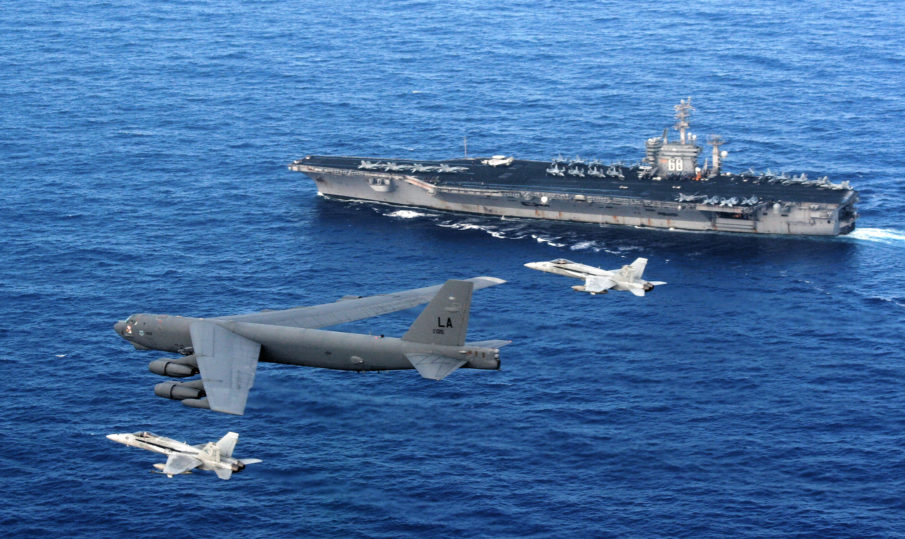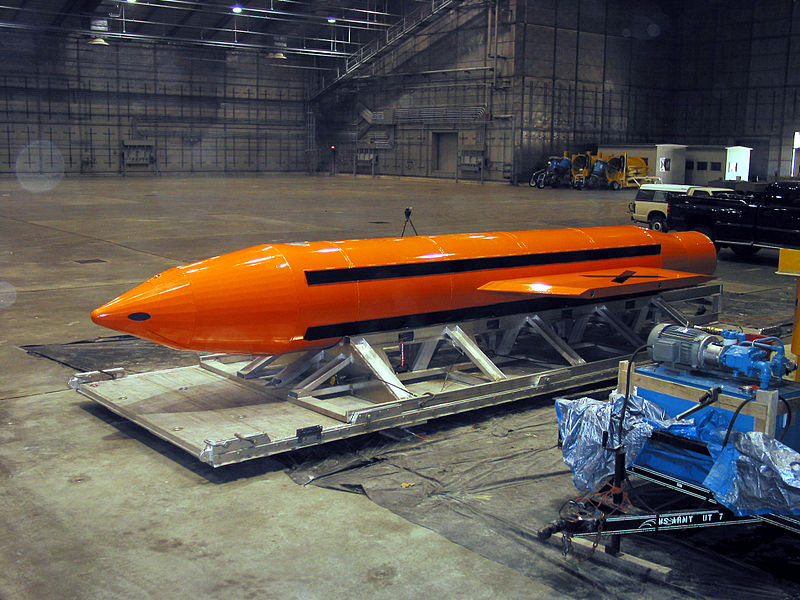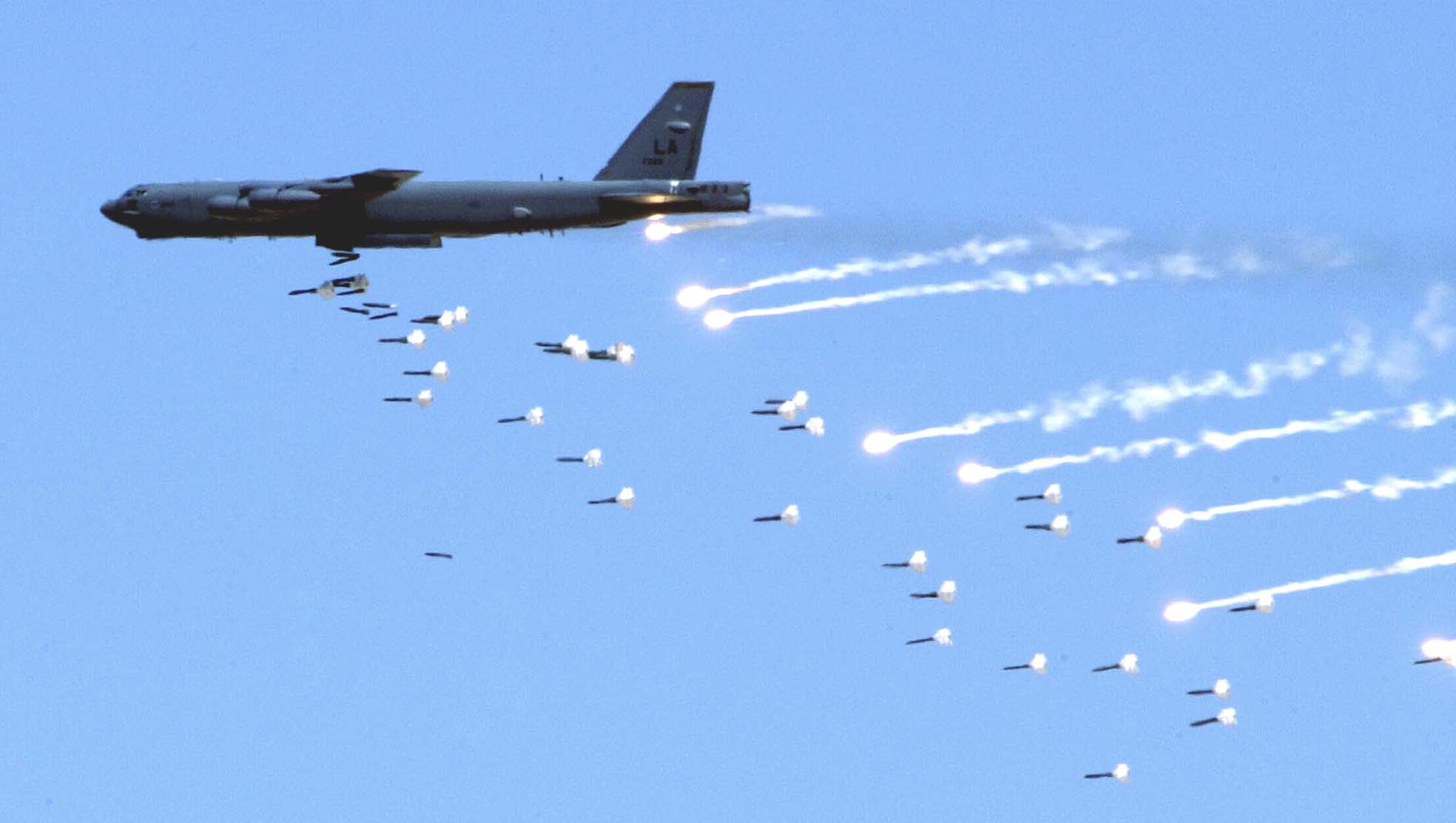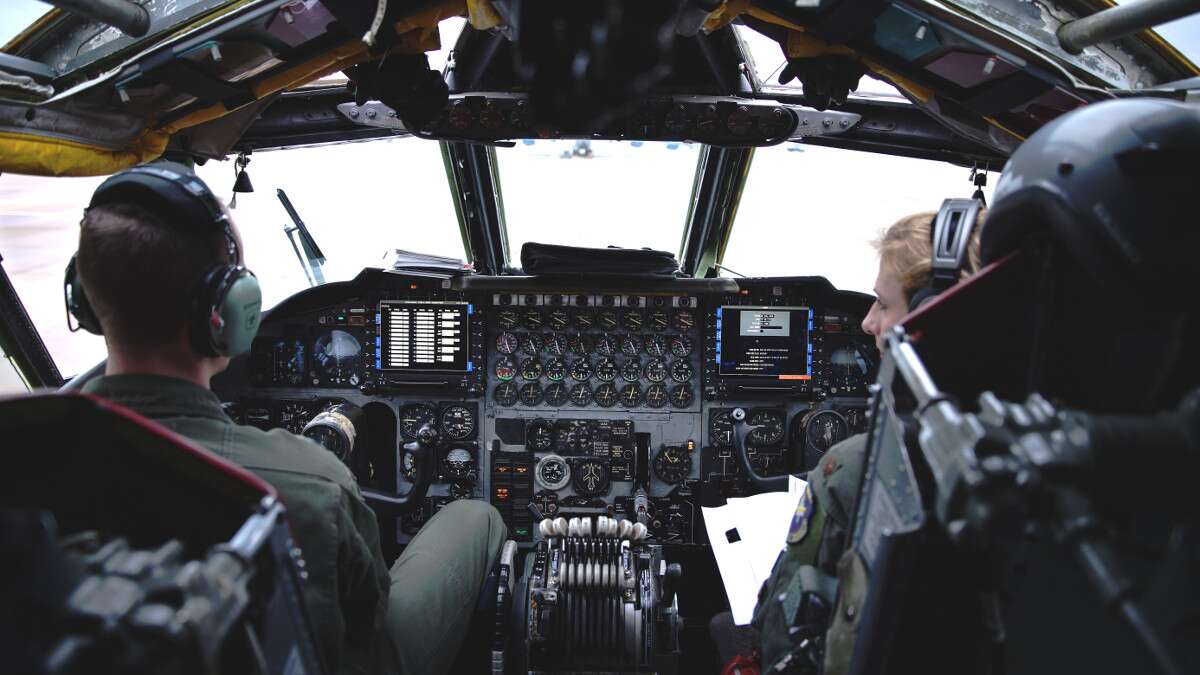America’s oldest bomber could become its most powerful ‘arsenal plane’
BY
ALEX HOLLINGS 06.28.2018
#MILITARY NEWSEMAIL
SHARE TWEET
The Boeing B-52 Stratofortress bomber is far more than an iconic glimpse of military aviation dating all the way back to 1952 — in many ways the updated platform remains the premier bomber in the U.S. Arsenal. As the U.S. Air Force clears the way for the forthcoming B-21 Raider, the comparably newer B-2 Spirit and B-1B Lancer are both slated for the scrap heap… with the mighty B-52 expected to remain on the
active roster for years to come.
But staying in the fight has always meant changing for the B-52, which first entered operational service in 1955 and has since undergone repeated upgrade and update cycles. As one of the nation’s only two nuclear capable bombers (a distinction it shares only with the B-2 Spirit), the B-52 serves as a significant element of America’s nuclear triad while also fulfilling a variety of other conventional bomber responsibilities.
Now, with eyes toward the future of peer and near-peer warfare, however, the B-52 may need to adopt a new approach to combat operations. The massive aircraft is simply too big, too slow, and lacks the stealth to operate freely in contested airspace… but a new plan the Air Force is developing could make the aged bomber not only useful in the fight once again, it could make the legendary aircraft into the tip of the modern warfare spear.
One of the elements of the B-52H heavy bomber that has lasted since the aircraft’s inception are the pylons used to mount ordnance under the wings. These pylons are capable of wielding 5,000-pound bombs or missiles, which at the time seemed like more than any combat aircraft could ever need. Today, however, the U.S. military has two bombs that exceed that weight limit, one of which — the GBU-43/B MOAB — weighs in at an incredible 20,000 pounds, and the other — the GBU-57 Massive Ordnance Penetrator (MOP) — weighs approximately 10,000 pounds
more than that.
The GBU-43/B Massive Ordnance Air Blast (MOAB) is more than 30 feet long and weighs approximately 21,600 pounds. | Wikimedia Commons
The GBU-43 MOAB (commonly referred to as the Mother of All Bombs) saw its first
use in combat in Afghanistan last April, where it was used to destroy an underground ISIS complex. It’s bigger brother, the MOP, is designed specifically to destroy underground bunkers protected by as much as 200 feet of reinforced concrete. These two weapons systems represent the most powerful conventional ordnance the U.S. has at their disposal. If these bombs can’t cut it, there’s nothing left to throw at a target without dipping into the nation’s nuclear stockpile.
With a payload capacity of 70,000 pounds, the B-52 is among the few aircraft employed by the U.S. military that could manage to carry more than one of these massive bombs, if only the hard points on the aircraft could support them.
The B-52 can currently deploy a single MOAB from its internal weapons bay. | U.S. Air Force photo
You probably know where this is going.
“There wasn’t a requirement nor did anyone foresee a need to carry weapons heavier than 5,000lb,” a market survey released by the Air Force earlier this week
reads. “With current heavy weapons exceeding 5,000lb there is a new requirement for a replacement external carriage pylon assembly to facilitate these and other emerging needs.”
The document goes on to solicit pitches from the private sector for a contract that would result in the prototyping and production of a system that would replace the 5,000 pound limit pylons with ones that could support the 20,000 pound MOAB on each wing… but it could potentially lead to much more than that. This new endeavor could ultimately produce what former Defense Secretary Ash Carter
referred toas an “arsenal plane,” harkening back to the defunct “arsenal ship” concept of the 1990s.
An arsenal plane, in short, would be a massive bomber that was packed to the gills with long range standoff missiles like the
Joint Air to Surface Standoff Missile (JASSM) or more likely, the extended range variant. Using an on-board data link that supplies targeting data from stealth aircraft like the F-35 and the overhead constellation of defense satellites, a B-52H Arsenal Plane could support 5th generation fighters by approaching the cusp of contested airspace and releasing a massive salvo of missiles that could engage and destroy enemy aircraft or defenses, clearing the path for other more advanced aircraft to operate freely over the battlefield.
Using the B-52 for these purposes would certainly make much more sense than Lockheed’s pitch for a “beat mode” F-35 that included adding ordnance hard points to the wings of the aircraft and compromising its stealth profile.
This plan is still in its early stages, with the Air Force aiming for a three to six year time span for engineering and development.
Featured image: A B-52 Stratofortress is intercepted by two Navy F/A-18 Hornets as it flies past the aircraft carrier USS Nimitz (CVN 68). The B-52 is from the 96th Expeditionary Bomb Squadron deployed to Andersen Air Force Base, Guam. | U.S. Air Force photo









